Quantum Cascade Laser Market Outlook:
Quantum Cascade Laser Market size was over USD 466.92 million in 2025 and is projected to reach USD 739.11 million by 2035, witnessing around 4.7% CAGR during the forecast period i.e., between 2026-2035. In the year 2026, the industry size of quantum cascade laser is evaluated at USD 486.67 million.
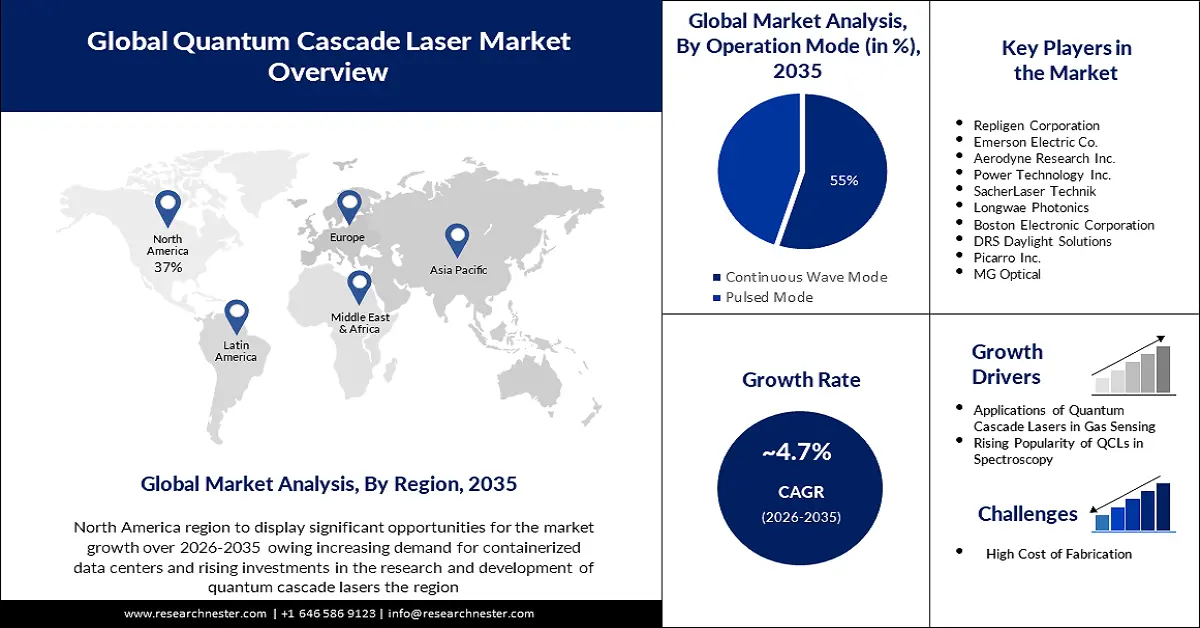
The increasing trend of miniaturization of sensing components has enabled the integration of several sensing components into a single device, which in turn is driving the demand for miniaturized sensing devices such as quantum cascade lasers. Quantum cascade lasers (QCLs) can be used to create smaller sensors that can be used in a variety of applications such as medical imaging, environmental sensing, and automotive safety. They can also be used to create more efficient and accurate optical systems that are more compact than conventional lasers.
QCLs had established a strong presence in defense and aerospace applications, such as infrared countermeasures, LIDAR systems, and remote sensing. This is due to their high power levels, low cost, and reliable operation under extreme environmental conditions, such as high temperatures, vibration, and shock. Additionally, they have a wide spectral range and can be tuned to allow precise control of the laser's output.
Key Quantum Cascade Laser Market Insights Summary:
Regional Highlights:
- The North America quantum cascade laser market will hold over 37% share by 2035, fueled by increasing demand for containerized data centers.
- The Asia Pacific market will secure 28% share by 2035, fueled by demand for optoelectronic devices in varied sectors.
Segment Insights:
- The continuous wave mode segment in the quantum cascade laser market is expected to hold a 55% share by 2035, driven by its ability to emit laser light continuously, increasing energy savings.
- The c-mount segment in the quantum cascade laser market is expected to hold a 41% share by 2035, attributed to the reliability, robustness, and cost-effectiveness of c-mount lasers.
Key Growth Trends:
- Rising Popularity of QCLs in Spectroscopy
- Applications of Quantum Cascade Lasers in Gas Sensing
Major Challenges:
- High Cost of Fabrication
- Competition from alternative technologies such as diode lasers and fiber lasers
Key Players: Repligen Corporation, Emerson Electric Co., Aerodyne Research Inc., Power Technology Inc., SacherLaser Technik, Longwae Photonics, Boston Electronic Corporation, DRS Daylight Solutions, Picarro Inc., MG Optical.
Global Quantum Cascade Laser Market Forecast and Regional Outlook:
Market Size & Growth Projections:
- 2025 Market Size: USD 466.92 million
- 2026 Market Size: USD 486.67 million
- Projected Market Size: USD 739.11 million by 2035
- Growth Forecasts: 4.7% CAGR (2026-2035)
Key Regional Dynamics:
- Largest Region: North America (37% Share by 2035)
- Fastest Growing Region: Asia Pacific
- Dominating Countries: United States, Germany, Japan, China, United Kingdom
- Emerging Countries: China, India, Japan, South Korea, Singapore
Last updated on : 11 September, 2025
Quantum Cascade Laser Market Growth Drivers and Challenges:
Growth Drivers
- Rising Popularity of QCLs in Spectroscopy- QCLs have revolutionized the field of spectroscopy. They offer unique advantages over traditional lasers, such as their ability to emit in the mid-infrared region, which is particularly useful for detecting certain chemical compounds. This allows scientists to detect compounds that were previously difficult to observe, such as volatile organic compounds that are found in the atmosphere and can cause air pollution. QCLs also have a much higher power output than traditional lasers, allowing for more precise detection and measurement.
- Applications of Quantum Cascade Lasers in Gas Sensing- QLCs have numerous applications in gas sensing due to their ability to emit light at specific wavelengths. This allows for highly accurate and sensitive detection of gases in the atmosphere. Unlike traditional gas sensors, QCL-based sensors can detect multiple gases simultaneously and with high specificity. This makes them ideal for industrial and environmental monitoring applications where the detection of trace amounts of gases is critical.
- Emerging use of QCLs in Medical Diagnostics- QCLs are a type of semiconductor laser that can be tuned to emit light at different wavelengths. This means that they can be used to measure very specific molecules in the breath or blood, allowing for more accurate and precise detection of diseases than traditional methods. This would allow doctors to diagnose illnesses much earlier and provide more effective treatments, potentially saving the lives of countless people.
Challenges
- High Cost of Fabrication: QCLs can be expensive to manufacture due to their complex design and the need for precise semiconductor layer deposition. The complexity of the design increases the cost of fabrication, while the need to precisely deposit many layers of semiconductor materials increases the cost of materials and labor. Reducing production costs is a significant challenge to make QCLs more commercially viable.
- Competition from alternative technologies such as diode lasers and fiber lasers
- Obstacles to regulatory and safety compliance in sectors such as healthcare and defense
Quantum Cascade Laser Market Size and Forecast:
| Report Attribute | Details |
|---|---|
|
Base Year |
2025 |
|
Forecast Period |
2026-2035 |
|
CAGR |
4.7% |
|
Base Year Market Size (2025) |
USD 466.92 million |
|
Forecast Year Market Size (2035) |
USD 739.11 million |
|
Regional Scope |
|
Quantum Cascade Laser Market Segmentation:
Type Segment Analysis
The C-mount segment in the quantum cascade laser market is estimated to gain the largest revenue share of about 41% in the year 2035. The segment's growth is attributed to the reliability, robustness, and cost-effectiveness of C-mount lasers, making them an attractive option for many industrial applications. Additionally, C-mount lasers are capable of producing higher power outputs than other types of lasers, which makes them ideal for applications such as line scanning, 3D printing, and medical diagnostics.
Operation Mode Segment Analysis
Quantum cascade laser market from the continuous wave mode segment is estimated to gain a significant share of about 55% in the year 2035. The segment growth can be attributed to the continuous wave mode segment is expected to grow at a higher rate due to its ability to emit laser light at a continuous rate. This makes them ideal for applications such as spectroscopy, sensing, and laser material processing. Additionally, because the laser is always on, it is more efficient than other laser modes which require the laser to be switched on and off, resulting in higher energy savings.
Our in-depth analysis of the global market includes the following segments:
|
Fabrication Type |
|
|
Operation Mode |
|
|
Type |
|
|
End-User Industry |
|

Vishnu Nair
Head - Global Business DevelopmentCustomize this report to your requirements — connect with our consultant for personalized insights and options.
Quantum Cascade Laser Market Regional Analysis:
North American Market Insights
Quantum cascade laser market in North America, amongst the market in all the other regions, is anticipated to hold the largest with a share of about 37% by the end of 2035. The market growth in the region is also expected on account of the increasing demand for containerized data centers and rising investments in the research and development of quantum cascade lasers.
Data centers require lasers for a variety of applications, including data storage, communication, and networking. As the demand for data centers continues to increase, so does the demand for quantum cascade lasers, which are the most efficient type of laser for these tasks. Moreover, the increasing use of quantum cascade lasers in a number of applications, such as spectroscopy, sensing, and telecommunications, is expected to drive the market in the region.
APAC Market Insights
The Asia Pacific quantum cascade laser market is estimated to be the second largest, registering a share of about 28% by the end of 2035. The market’s expansion can be attributed majorly to the increasing demand for optoelectronic devices and applications in the defense, medical, industrial, and consumer sectors. As technology advances, there is a growing demand for optoelectronic devices such as laser diodes, light-emitting diodes, and photodetectors. These devices are used in a variety of applications, including quantum cascade lasers, which require optoelectronic devices as key components. Moreover, the rising adoption of energy-efficient lasers is also driving the growth of the Asia Pacific quantum cascade laser market.
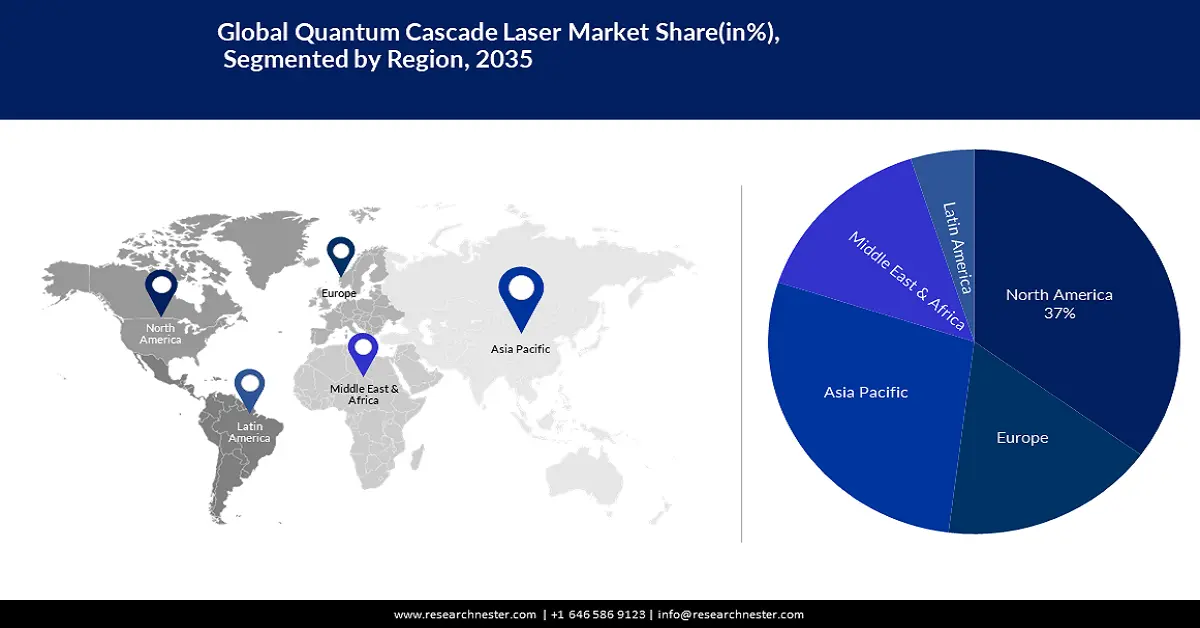
Quantum Cascade Laser Market Players:
- Repligen Corporation
- Company Overview
- Business Strategy
- Key Product Offerings
- Financial Performance
- Key Performance Indicators
- Risk Analysis
- Recent Development
- Regional Presence
- SWOT Analysis
- Emerson Electric Co.
- Aerodyne Research Inc.
- Power Technology Inc.
- SacherLaser Technik
- Longwae Photonics
- Boston Electronic Corporation
- DRS Daylight Solutions
- Picarro Inc.
- MG Optical
Recent Developments
- Edmund Optics, a provider of optical components for various applications has joined forces with ISP Optics to ensure global accessibility to their extensive range of high quality optical components. These components are available in over 15 infrared (IR) materials.
- Repligen Corporation has recently announced a partnership and license agreement with DRS Daylight Solutions. The objective is to expand the utilization of midinfrared (mid IR) technology in the bioprocessing market. The focus will be on enhancing the portfolio of Quantum Cascade Laser mid IR (QCL IR) based solutions and integrating them into Repligens Chromatography and Filtration systems.
- Report ID: 5203
- Published Date: Sep 11, 2025
- Report Format: PDF, PPT
- Get detailed insights on specific segments/region
- Inquire about report customization for your industry
- Learn about our special pricing for startups
- Request a demo of the report’s key findings
- Understand the report’s forecasting methodology
- Inquire about post-purchase support and updates
- Ask About Company-Level Intelligence Additions
Have specific data needs or budget constraints?
Frequently Asked Questions (FAQ)
Quantum Cascade Laser Market Report Scope
FREE Sample Copy includes market overview, growth trends, statistical charts & tables, forecast estimates, and much more.
Connect with our Expert
See how top U.S. companies are managing market uncertainty — get your free sample with trends, challenges, macroeconomic factors, charts, forecasts, and more.
Copyright @ 2025 Research Nester. All Rights Reserved.

 Inquiry Before Buying
Inquiry Before Buying


 Afghanistan (+93)
Afghanistan (+93)
 Åland Islands (+358)
Åland Islands (+358)
 Albania (+355)
Albania (+355)
 Algeria (+213)
Algeria (+213)
 American Samoa (+1684)
American Samoa (+1684)
 Andorra (+376)
Andorra (+376)
 Angola (+244)
Angola (+244)
 Anguilla (+1264)
Anguilla (+1264)
 Antarctica (+672)
Antarctica (+672)
 Antigua and Barbuda (+1268)
Antigua and Barbuda (+1268)
 Argentina (+54)
Argentina (+54)
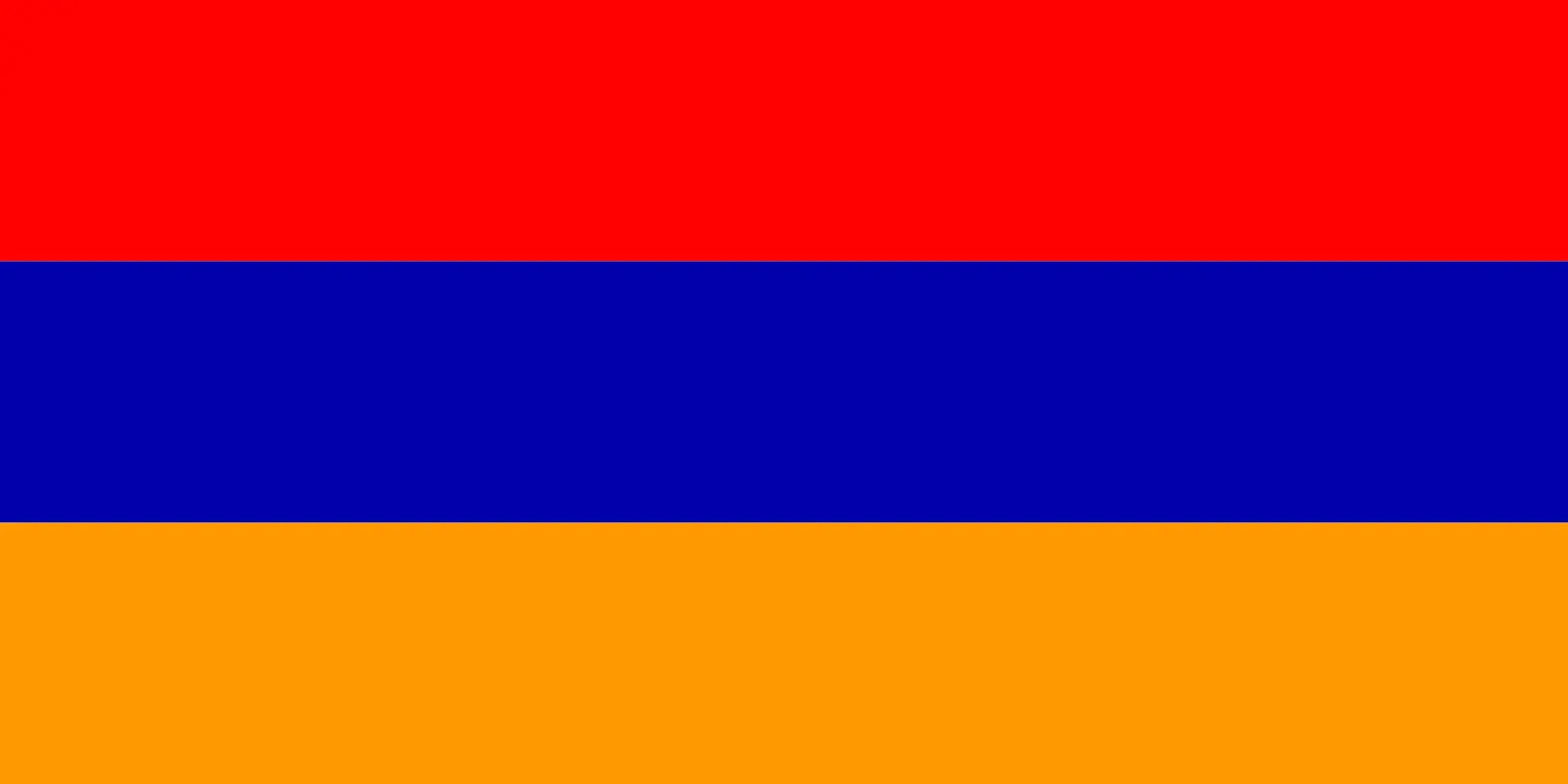 Armenia (+374)
Armenia (+374)
 Aruba (+297)
Aruba (+297)
 Australia (+61)
Australia (+61)
 Austria (+43)
Austria (+43)
 Azerbaijan (+994)
Azerbaijan (+994)
 Bahamas (+1242)
Bahamas (+1242)
 Bahrain (+973)
Bahrain (+973)
 Bangladesh (+880)
Bangladesh (+880)
 Barbados (+1246)
Barbados (+1246)
 Belarus (+375)
Belarus (+375)
 Belgium (+32)
Belgium (+32)
 Belize (+501)
Belize (+501)
 Benin (+229)
Benin (+229)
 Bermuda (+1441)
Bermuda (+1441)
 Bhutan (+975)
Bhutan (+975)
 Bolivia (+591)
Bolivia (+591)
 Bosnia and Herzegovina (+387)
Bosnia and Herzegovina (+387)
 Botswana (+267)
Botswana (+267)
 Bouvet Island (+)
Bouvet Island (+)
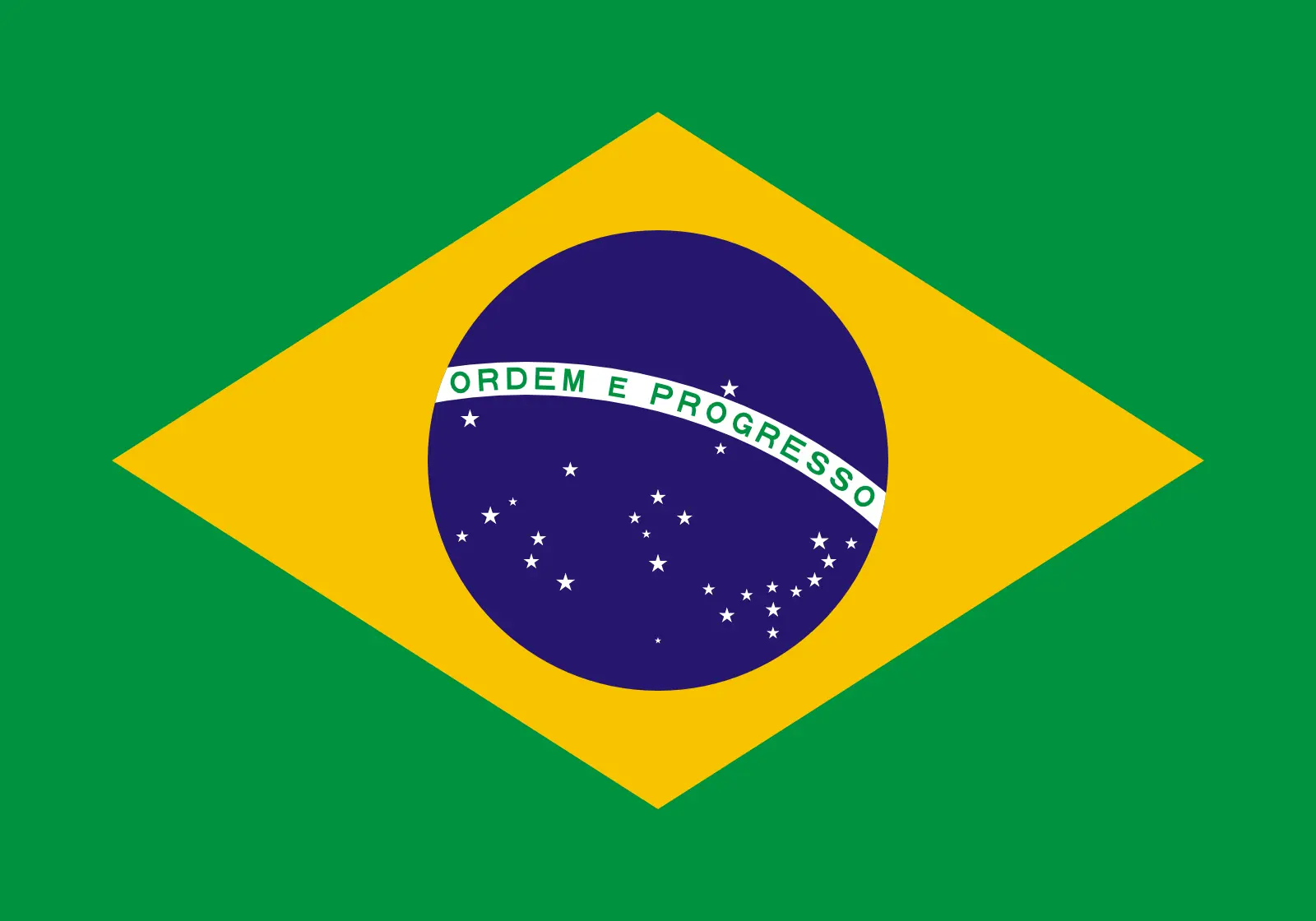 Brazil (+55)
Brazil (+55)
 British Indian Ocean Territory (+246)
British Indian Ocean Territory (+246)
 British Virgin Islands (+1284)
British Virgin Islands (+1284)
 Brunei (+673)
Brunei (+673)
 Bulgaria (+359)
Bulgaria (+359)
 Burkina Faso (+226)
Burkina Faso (+226)
 Burundi (+257)
Burundi (+257)
 Cambodia (+855)
Cambodia (+855)
 Cameroon (+237)
Cameroon (+237)
 Canada (+1)
Canada (+1)
 Cape Verde (+238)
Cape Verde (+238)
 Cayman Islands (+1345)
Cayman Islands (+1345)
 Central African Republic (+236)
Central African Republic (+236)
 Chad (+235)
Chad (+235)
 Chile (+56)
Chile (+56)
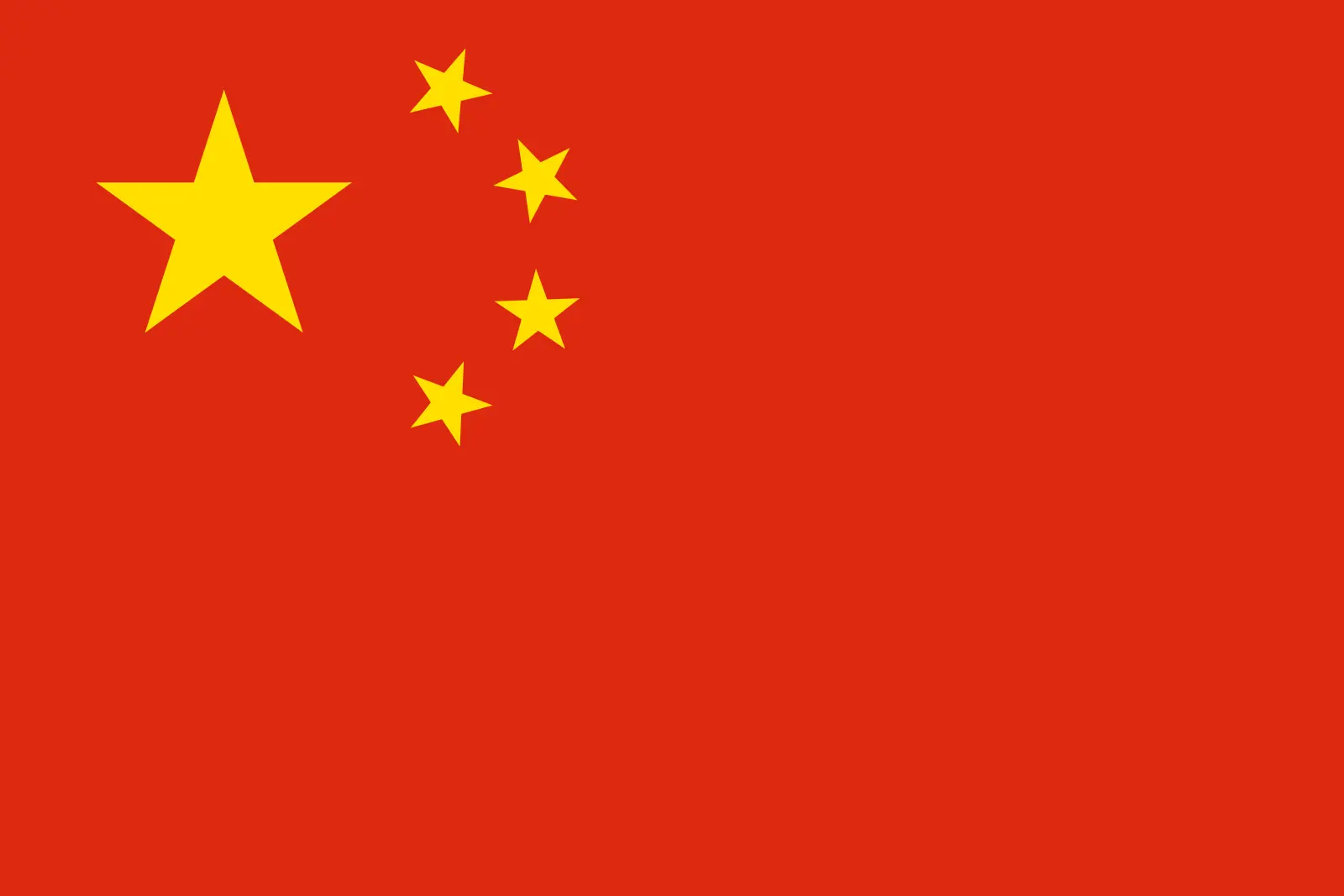 China (+86)
China (+86)
 Christmas Island (+61)
Christmas Island (+61)
 Cocos (Keeling) Islands (+61)
Cocos (Keeling) Islands (+61)
 Colombia (+57)
Colombia (+57)
 Comoros (+269)
Comoros (+269)
 Cook Islands (+682)
Cook Islands (+682)
 Costa Rica (+506)
Costa Rica (+506)
 Croatia (+385)
Croatia (+385)
 Cuba (+53)
Cuba (+53)
 Curaçao (+599)
Curaçao (+599)
 Cyprus (+357)
Cyprus (+357)
 Czechia (+420)
Czechia (+420)
 Democratic Republic of the Congo (+243)
Democratic Republic of the Congo (+243)
 Denmark (+45)
Denmark (+45)
 Djibouti (+253)
Djibouti (+253)
 Dominica (+1767)
Dominica (+1767)
 Dominican Republic (+1809)
Dominican Republic (+1809)
 Timor-Leste (+670)
Timor-Leste (+670)
 Ecuador (+593)
Ecuador (+593)
 Egypt (+20)
Egypt (+20)
 El Salvador (+503)
El Salvador (+503)
 Equatorial Guinea (+240)
Equatorial Guinea (+240)
 Eritrea (+291)
Eritrea (+291)
 Estonia (+372)
Estonia (+372)
 Ethiopia (+251)
Ethiopia (+251)
 Falkland Islands (+500)
Falkland Islands (+500)
 Faroe Islands (+298)
Faroe Islands (+298)
 Fiji (+679)
Fiji (+679)
 Finland (+358)
Finland (+358)
 France (+33)
France (+33)
 Gabon (+241)
Gabon (+241)
 Gambia (+220)
Gambia (+220)
 Georgia (+995)
Georgia (+995)
 Germany (+49)
Germany (+49)
 Ghana (+233)
Ghana (+233)
 Gibraltar (+350)
Gibraltar (+350)
 Greece (+30)
Greece (+30)
 Greenland (+299)
Greenland (+299)
 Grenada (+1473)
Grenada (+1473)
 Guadeloupe (+590)
Guadeloupe (+590)
 Guam (+1671)
Guam (+1671)
 Guatemala (+502)
Guatemala (+502)
 Guinea (+224)
Guinea (+224)
 Guinea-Bissau (+245)
Guinea-Bissau (+245)
 Guyana (+592)
Guyana (+592)
 Haiti (+509)
Haiti (+509)
 Honduras (+504)
Honduras (+504)
 Hong Kong (+852)
Hong Kong (+852)
 Hungary (+36)
Hungary (+36)
 Iceland (+354)
Iceland (+354)
 India (+91)
India (+91)
 Indonesia (+62)
Indonesia (+62)
 Iran (+98)
Iran (+98)
 Iraq (+964)
Iraq (+964)
 Ireland (+353)
Ireland (+353)
 Isle of Man (+44)
Isle of Man (+44)
 Israel (+972)
Israel (+972)
 Italy (+39)
Italy (+39)
 Jamaica (+1876)
Jamaica (+1876)
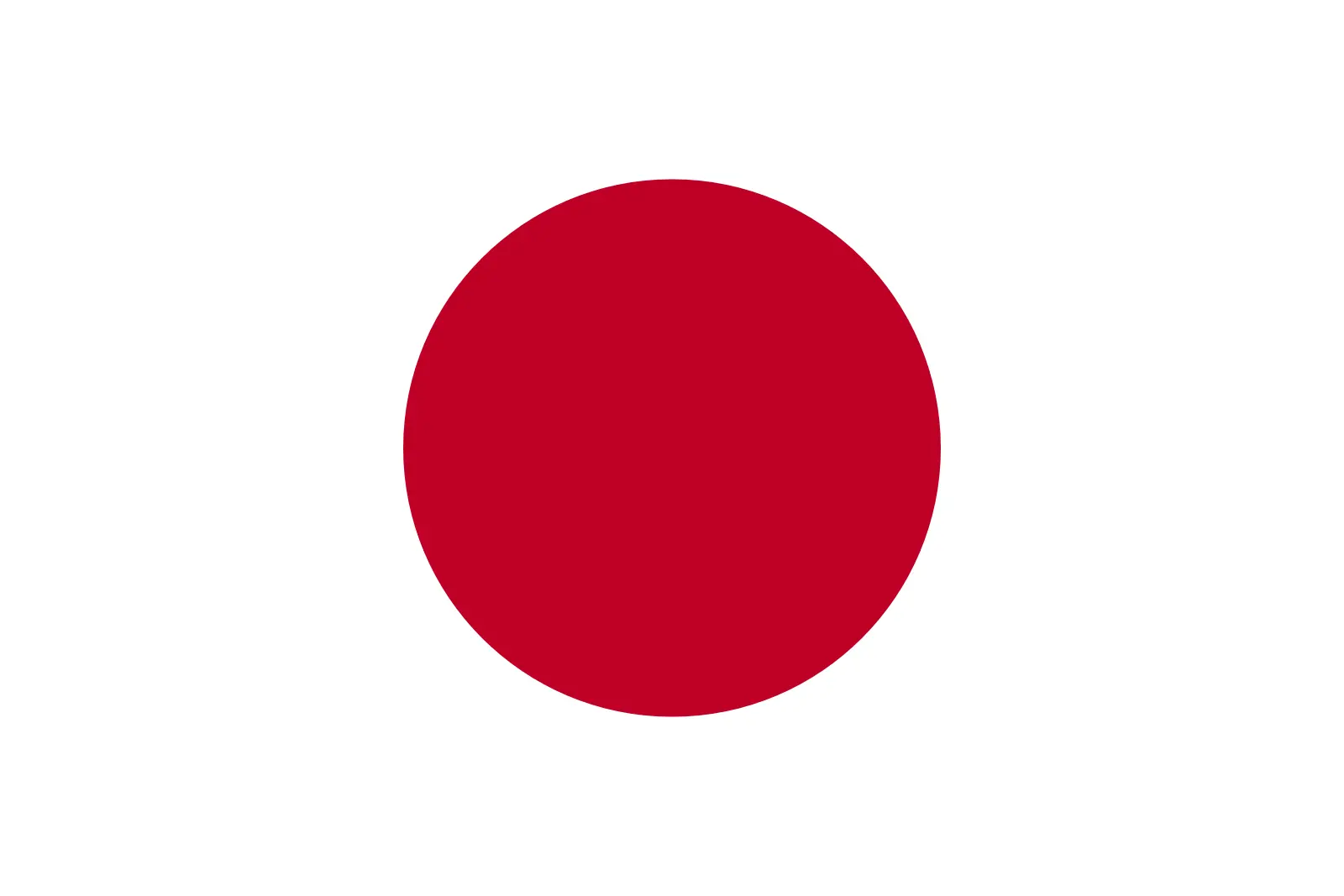 Japan (+81)
Japan (+81)
 Jersey (+44)
Jersey (+44)
 Jordan (+962)
Jordan (+962)
 Kazakhstan (+7)
Kazakhstan (+7)
 Kenya (+254)
Kenya (+254)
 Kiribati (+686)
Kiribati (+686)
 Kuwait (+965)
Kuwait (+965)
 Kyrgyzstan (+996)
Kyrgyzstan (+996)
 Laos (+856)
Laos (+856)
 Latvia (+371)
Latvia (+371)
 Lebanon (+961)
Lebanon (+961)
 Lesotho (+266)
Lesotho (+266)
 Liberia (+231)
Liberia (+231)
 Libya (+218)
Libya (+218)
 Liechtenstein (+423)
Liechtenstein (+423)
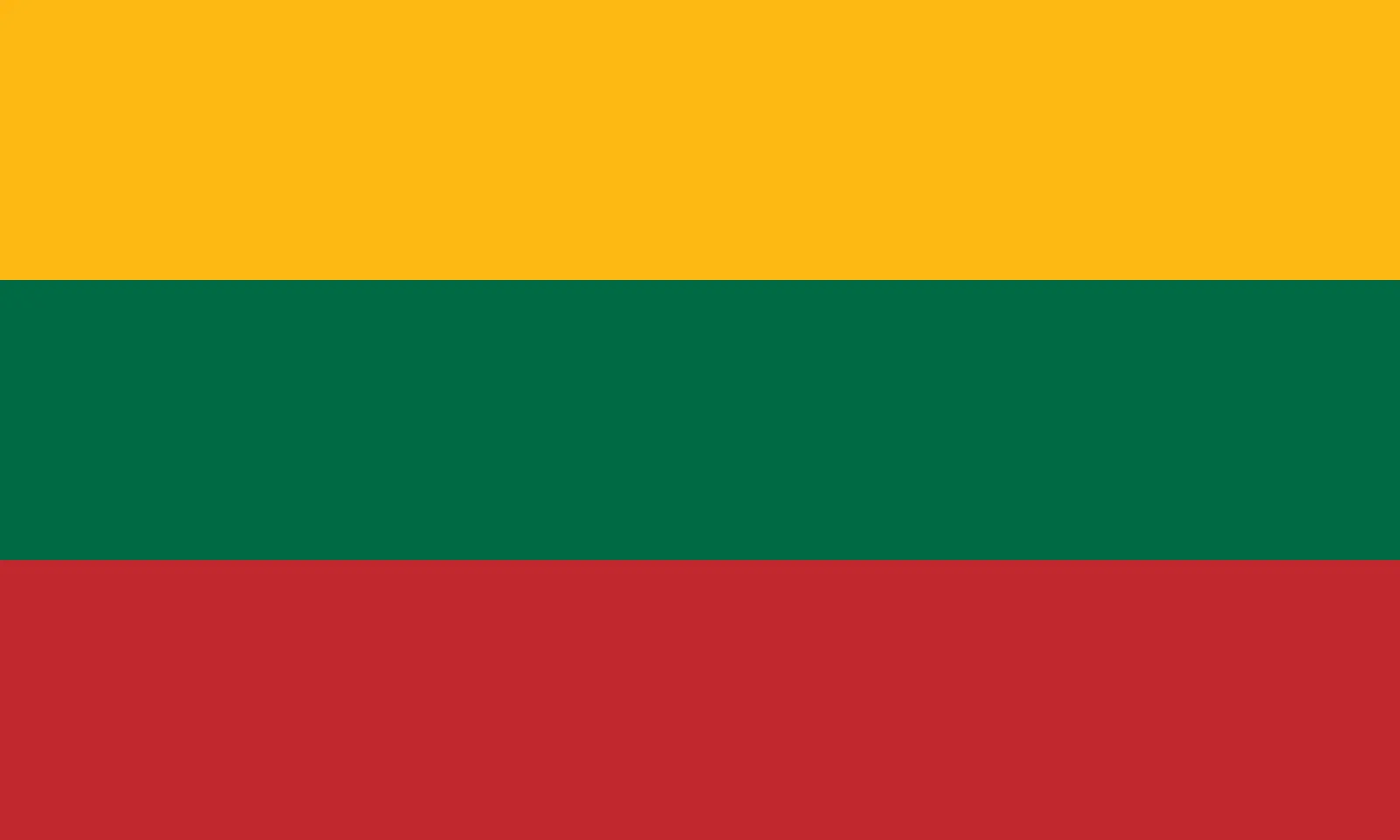 Lithuania (+370)
Lithuania (+370)
 Luxembourg (+352)
Luxembourg (+352)
 Macao (+853)
Macao (+853)
 Madagascar (+261)
Madagascar (+261)
 Malawi (+265)
Malawi (+265)
 Malaysia (+60)
Malaysia (+60)
 Maldives (+960)
Maldives (+960)
 Mali (+223)
Mali (+223)
 Malta (+356)
Malta (+356)
 Marshall Islands (+692)
Marshall Islands (+692)
 Mauritania (+222)
Mauritania (+222)
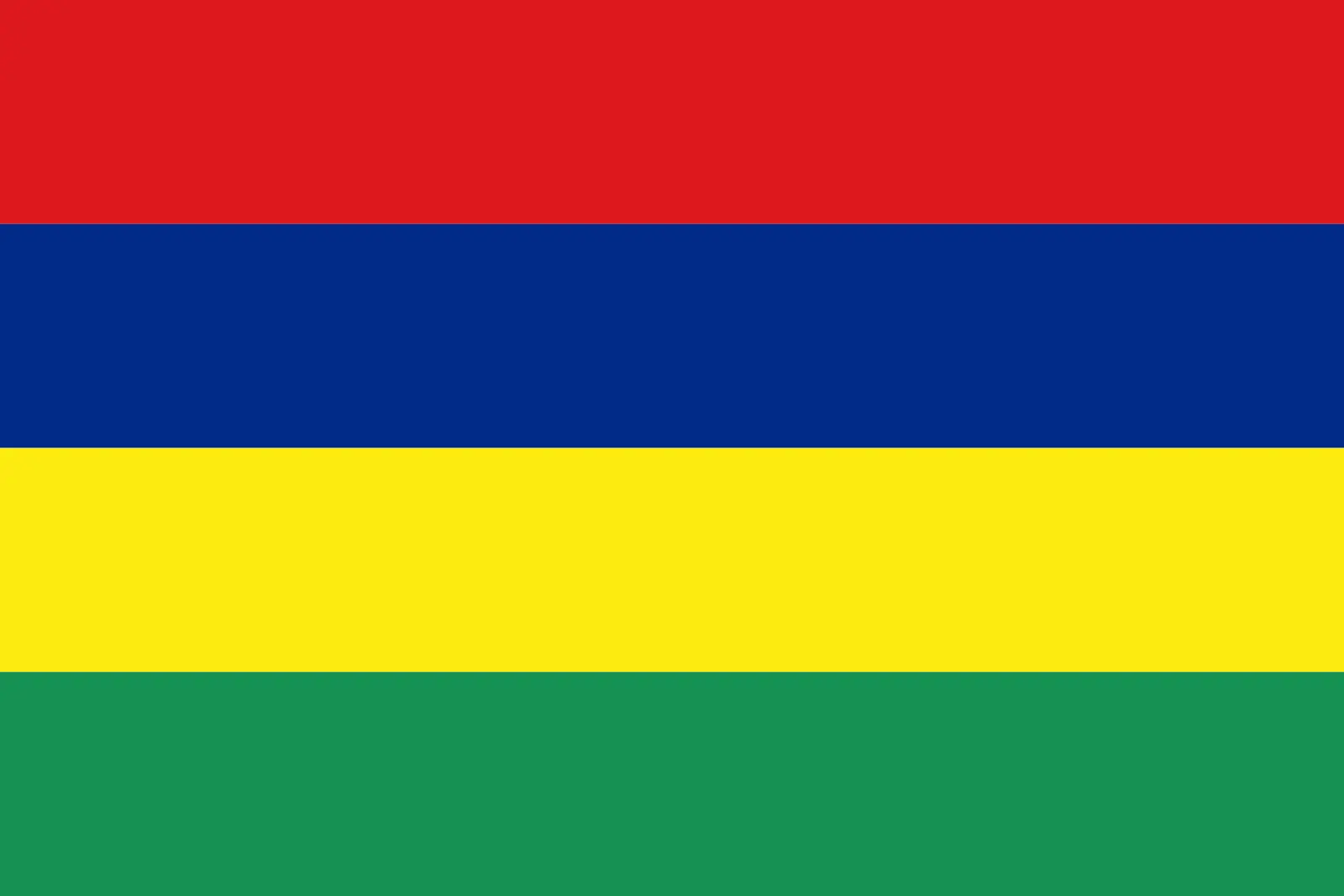 Mauritius (+230)
Mauritius (+230)
 Mayotte (+262)
Mayotte (+262)
 Mexico (+52)
Mexico (+52)
 Micronesia (+691)
Micronesia (+691)
 Moldova (+373)
Moldova (+373)
 Monaco (+377)
Monaco (+377)
 Mongolia (+976)
Mongolia (+976)
 Montenegro (+382)
Montenegro (+382)
 Montserrat (+1664)
Montserrat (+1664)
 Morocco (+212)
Morocco (+212)
 Mozambique (+258)
Mozambique (+258)
 Myanmar (+95)
Myanmar (+95)
 Namibia (+264)
Namibia (+264)
 Nauru (+674)
Nauru (+674)
 Nepal (+977)
Nepal (+977)
 Netherlands (+31)
Netherlands (+31)
 New Caledonia (+687)
New Caledonia (+687)
 New Zealand (+64)
New Zealand (+64)
 Nicaragua (+505)
Nicaragua (+505)
 Niger (+227)
Niger (+227)
 Nigeria (+234)
Nigeria (+234)
 Niue (+683)
Niue (+683)
 Norfolk Island (+672)
Norfolk Island (+672)
 North Korea (+850)
North Korea (+850)
 Northern Mariana Islands (+1670)
Northern Mariana Islands (+1670)
 Norway (+47)
Norway (+47)
 Oman (+968)
Oman (+968)
 Pakistan (+92)
Pakistan (+92)
 Palau (+680)
Palau (+680)
 Palestine (+970)
Palestine (+970)
 Panama (+507)
Panama (+507)
 Papua New Guinea (+675)
Papua New Guinea (+675)
 Paraguay (+595)
Paraguay (+595)
 Peru (+51)
Peru (+51)
 Philippines (+63)
Philippines (+63)
 Poland (+48)
Poland (+48)
 Portugal (+351)
Portugal (+351)
 Puerto Rico (+1787)
Puerto Rico (+1787)
 Qatar (+974)
Qatar (+974)
 Romania (+40)
Romania (+40)
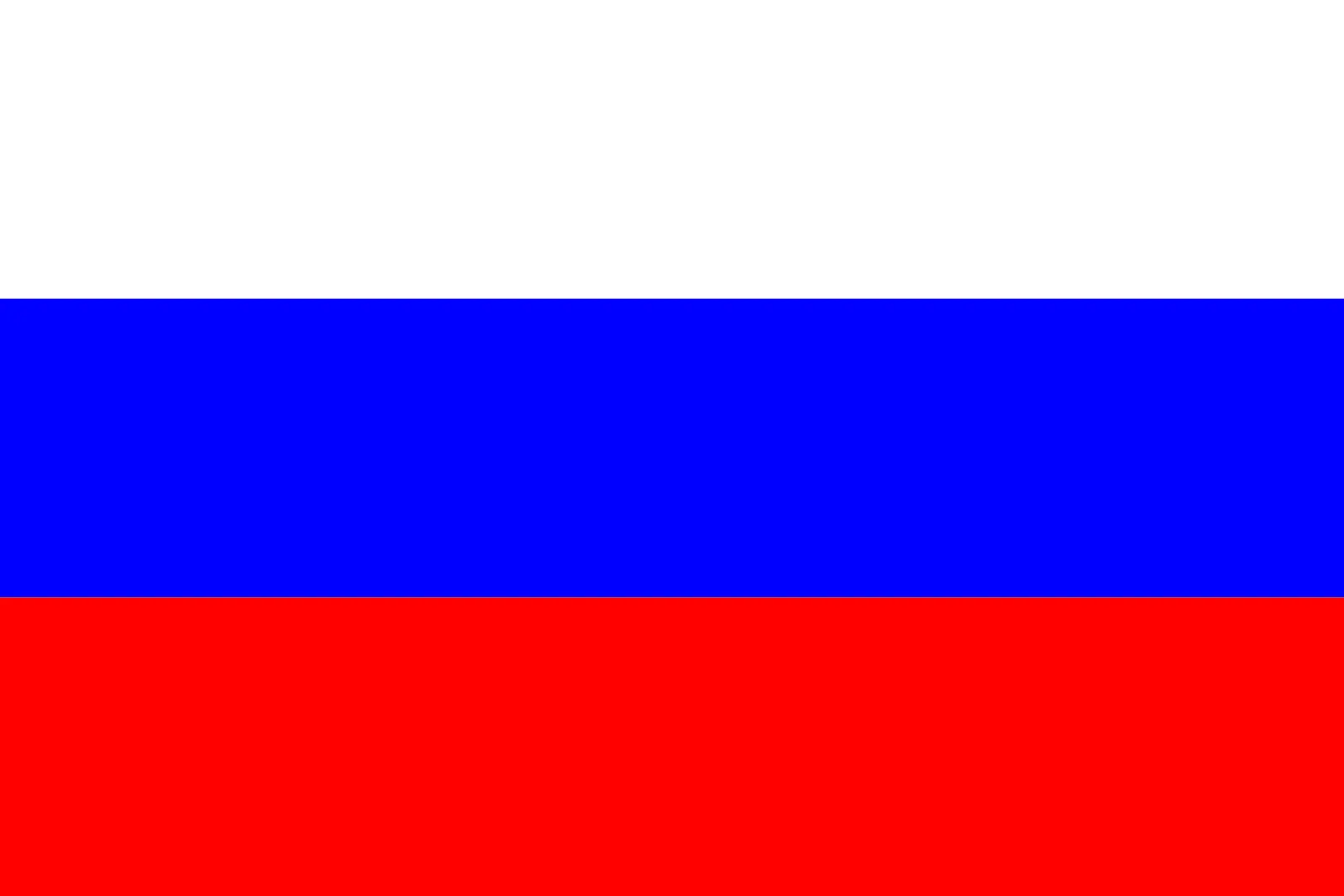 Russia (+7)
Russia (+7)
 Rwanda (+250)
Rwanda (+250)
 Saint Barthélemy (+590)
Saint Barthélemy (+590)
 Saint Helena, Ascension and Tristan da Cunha (+290)
Saint Helena, Ascension and Tristan da Cunha (+290)
 Saint Kitts and Nevis (+1869)
Saint Kitts and Nevis (+1869)
 Saint Lucia (+1758)
Saint Lucia (+1758)
 Saint Martin (French part) (+590)
Saint Martin (French part) (+590)
 Saint Pierre and Miquelon (+508)
Saint Pierre and Miquelon (+508)
 Saint Vincent and the Grenadines (+1784)
Saint Vincent and the Grenadines (+1784)
 Samoa (+685)
Samoa (+685)
 San Marino (+378)
San Marino (+378)
 Sao Tome and Principe (+239)
Sao Tome and Principe (+239)
 Saudi Arabia (+966)
Saudi Arabia (+966)
 Senegal (+221)
Senegal (+221)
 Serbia (+381)
Serbia (+381)
 Seychelles (+248)
Seychelles (+248)
 Sierra Leone (+232)
Sierra Leone (+232)
 Singapore (+65)
Singapore (+65)
 Sint Maarten (Dutch part) (+1721)
Sint Maarten (Dutch part) (+1721)
 Slovakia (+421)
Slovakia (+421)
 Slovenia (+386)
Slovenia (+386)
 Solomon Islands (+677)
Solomon Islands (+677)
 Somalia (+252)
Somalia (+252)
 South Africa (+27)
South Africa (+27)
 South Georgia and the South Sandwich Islands (+0)
South Georgia and the South Sandwich Islands (+0)
 South Korea (+82)
South Korea (+82)
 South Sudan (+211)
South Sudan (+211)
 Spain (+34)
Spain (+34)
 Sri Lanka (+94)
Sri Lanka (+94)
 Sudan (+249)
Sudan (+249)
 Suriname (+597)
Suriname (+597)
 Svalbard and Jan Mayen (+47)
Svalbard and Jan Mayen (+47)
 Eswatini (+268)
Eswatini (+268)
 Sweden (+46)
Sweden (+46)
 Switzerland (+41)
Switzerland (+41)
 Syria (+963)
Syria (+963)
 Taiwan (+886)
Taiwan (+886)
 Tajikistan (+992)
Tajikistan (+992)
 Tanzania (+255)
Tanzania (+255)
 Thailand (+66)
Thailand (+66)
 Togo (+228)
Togo (+228)
 Tokelau (+690)
Tokelau (+690)
 Tonga (+676)
Tonga (+676)
 Trinidad and Tobago (+1868)
Trinidad and Tobago (+1868)
 Tunisia (+216)
Tunisia (+216)
 Turkey (+90)
Turkey (+90)
 Turkmenistan (+993)
Turkmenistan (+993)
 Turks and Caicos Islands (+1649)
Turks and Caicos Islands (+1649)
 Tuvalu (+688)
Tuvalu (+688)
 Uganda (+256)
Uganda (+256)
 Ukraine (+380)
Ukraine (+380)
 United Arab Emirates (+971)
United Arab Emirates (+971)
 United Kingdom (+44)
United Kingdom (+44)
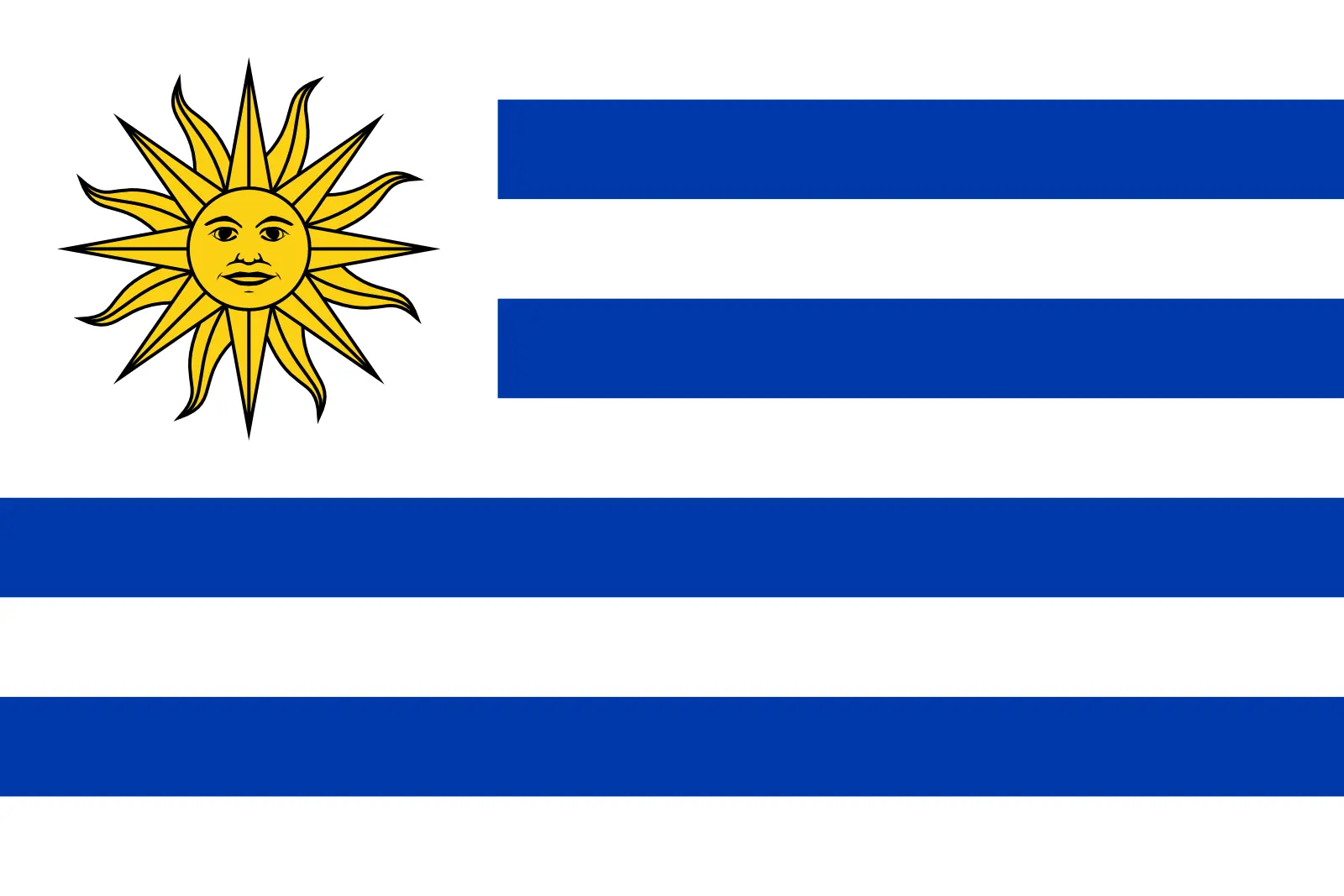 Uruguay (+598)
Uruguay (+598)
 Uzbekistan (+998)
Uzbekistan (+998)
 Vanuatu (+678)
Vanuatu (+678)
 Vatican City (+39)
Vatican City (+39)
 Venezuela (Bolivarian Republic of) (+58)
Venezuela (Bolivarian Republic of) (+58)
 Vietnam (+84)
Vietnam (+84)
 Wallis and Futuna (+681)
Wallis and Futuna (+681)
 Western Sahara (+212)
Western Sahara (+212)
 Yemen (+967)
Yemen (+967)
 Zambia (+260)
Zambia (+260)
 Zimbabwe (+263)
Zimbabwe (+263)
